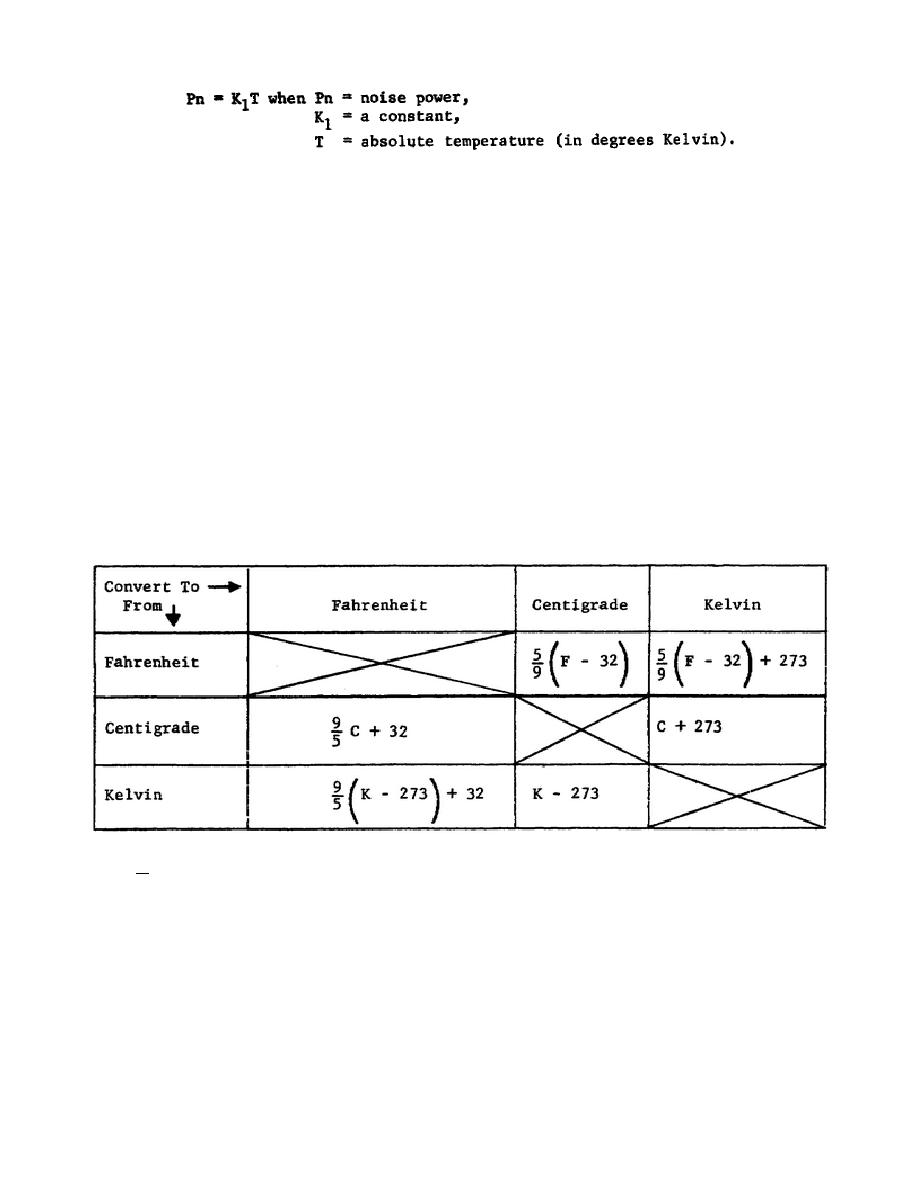
(1) To compare noise temperature measurements without regard to the type of device or bandwidth
involved, it is necessary to use a standard noise temperature reference.
(2) The Kelvin scale is used to show absolute temperatures. The Kelvin scale shows absolute
temperature because its zero point is reference to the (theoretically) lowest possible temperature
(absolute zero). Absolute zero is the temperature at which all thermal agitation (molecular
activity) theoretically ceases.
(3) The standard noise temperature is defined as 290 Kelvin (62.6 Fahrenheit, 17 centigrade).
(4) Temperature measurements that are expressed in the more common temperature scales,
Fahrenheit and centigrade, can be converted to the Kelvin scale by use of the appropriate
conversion factors given in table I. Measurements made in degrees Kelvin can also be converted
back to the more common temperature scales.
TABLE I
TEMPERATURE CONVERSION FACTORS
b. The noise power developed across a resistor is directly proportional to the absolute temperature.
This leads to the concept of noise temperature. Since a given resistor generates a given amount of
noise for a given temperature, it is possible to refer to that amount of power by a noise temperature
equivalent.
The measuring system, which will include amplifiers, has some bandwidth.
If this
measuring system were used to measure a signal of a fixed bandwidth which is less than the measuring
system's bandwidth, then a further increase in the measuring system's bandwidth would not
change the |measured power. Such is not the case with noisy resistors. Doubling the bandwidth of
344 L4
142



 Previous Page
Previous Page
